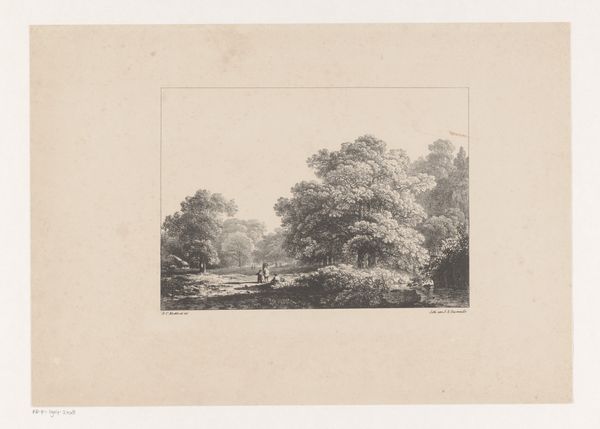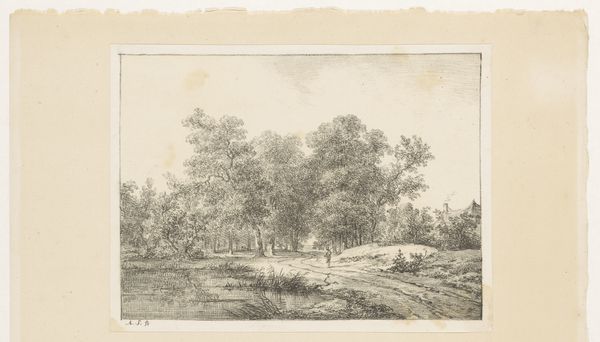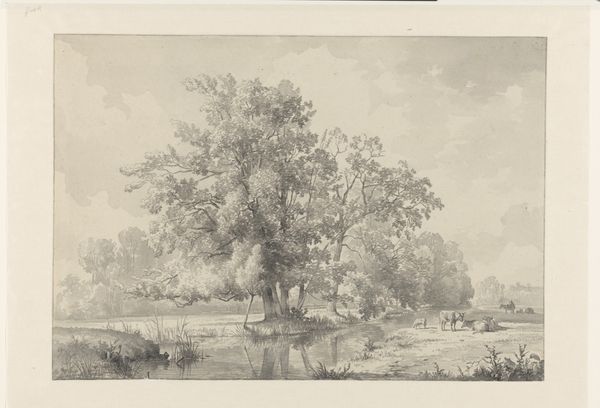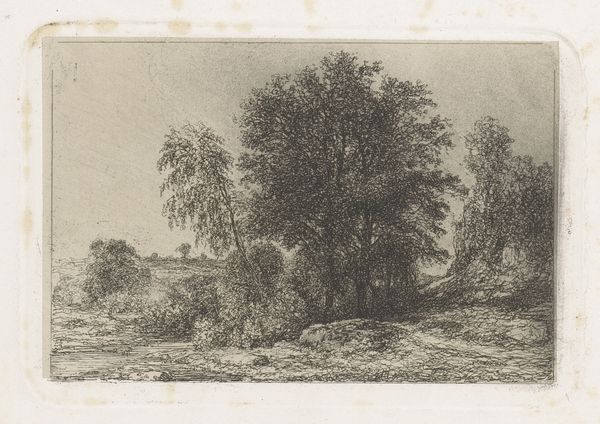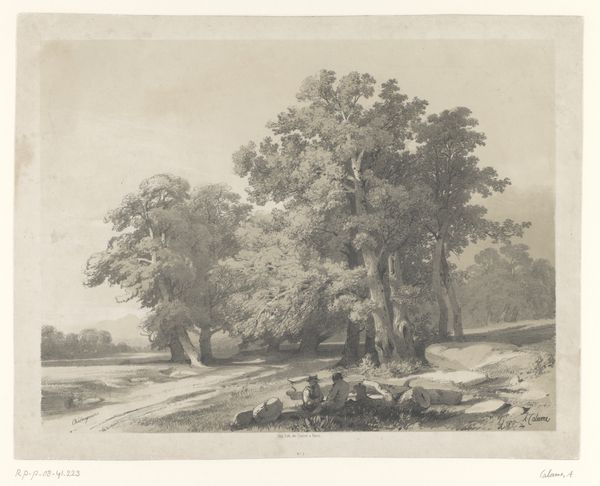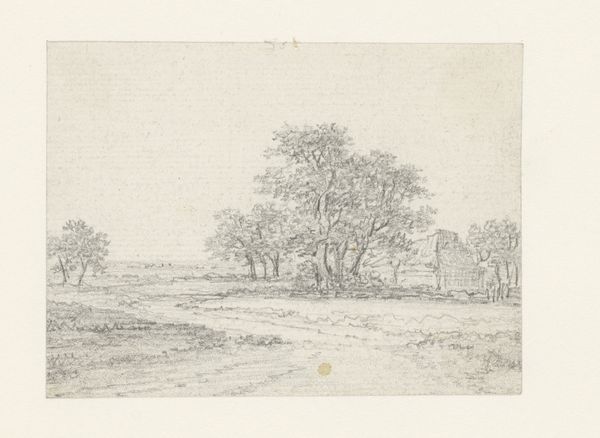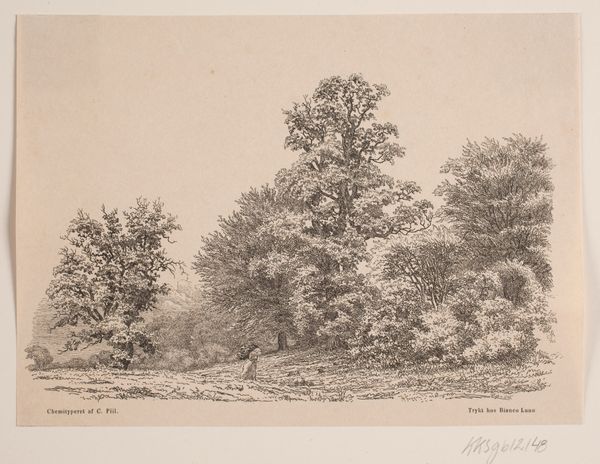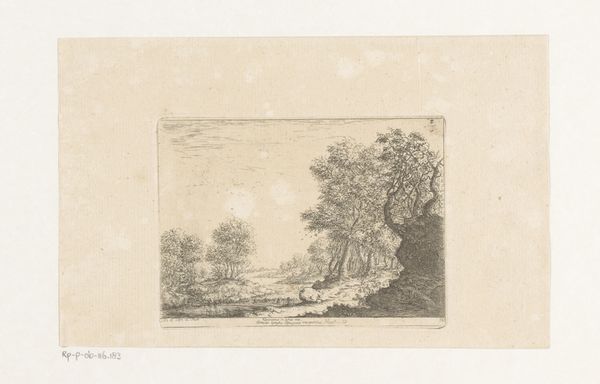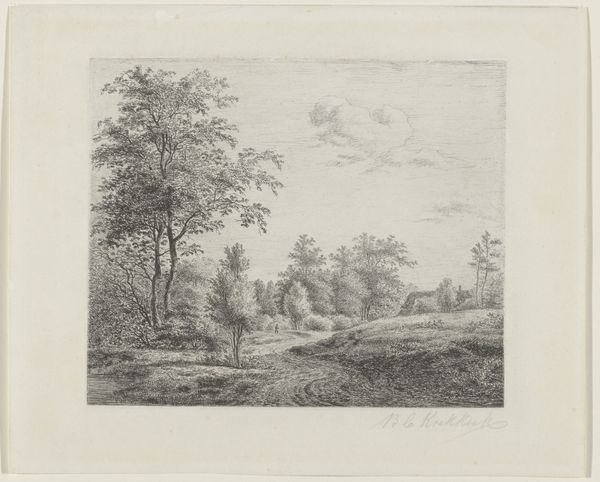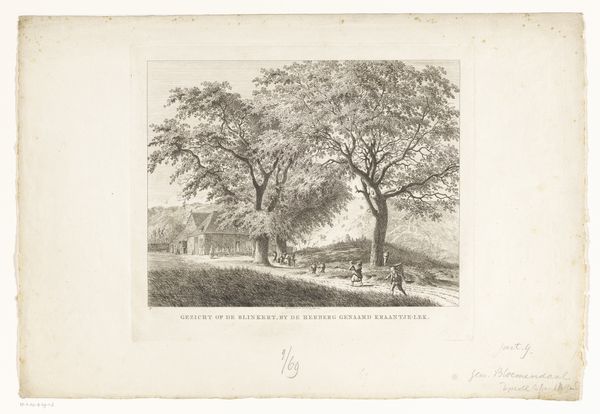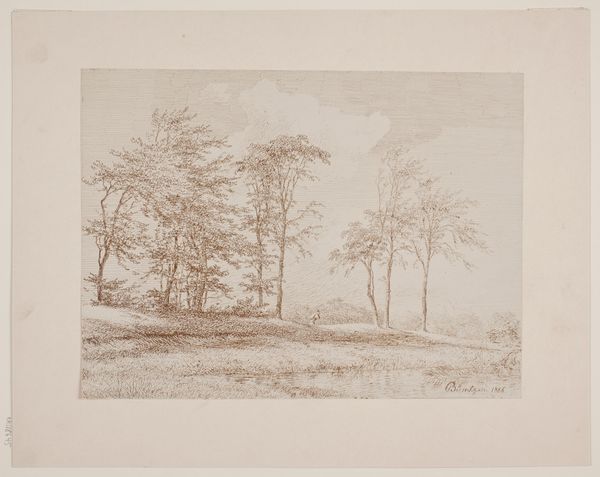
drawing, pencil
#
drawing
#
pencil sketch
#
landscape
#
romanticism
#
pencil
#
pencil work
#
realism
Dimensions: height 250 mm, width 392 mm
Copyright: Rijks Museum: Open Domain
Curator: Looking at this pencil drawing, I feel a deep sense of serenity; it is subtle and delicate, rendered in grayscale that exudes calmness. The composition, though simple, with its lush trees and grazing cattle, seems incredibly inviting. Editor: That's quite an evocative response. What you're describing speaks directly to the artist's intention. This is a pencil drawing entitled, "Landschap met herders en vee onder grote bomen"—Landscape with shepherds and cattle under large trees. The drawing dates to sometime between 1816 and 1882, and is by James de Rijk. The style harkens to the period's preoccupation with nature and the aesthetic appreciation of the working class as innocent beings connected with the earth. Curator: I immediately think about the politics of pastoral art, how this connects to the art world's interest in romanticising working class as innocent. This artwork could very easily portray an ideological construct. I wonder, to what degree does the imagery actually represent reality, or is it simply wishful thinking of the elite? Editor: That's a critical question. In the 19th century, art often functioned as a mirror reflecting the ideals and aspirations of the dominant social classes. The art institutions had become complicit and controlled which paintings made their way into which salon. How much did De Rijk's social position affect how these scenes were captured and presented? The artist and the socio-economic conditions of his environment may offer some insights. Curator: Exactly! Considering that artistic patronage largely came from wealthy elites, this could frame how we interpret the artist's intent. I'm not inherently opposed to depicting the working class. However, it’s necessary to think about the power dynamics at play when constructing art that can potentially affect our societies perception about social mobility, for example. Does the work challenge existing hierarchies, or does it merely reinforce them by suggesting that people of that class live simple lives? Editor: Well, to understand how this piece may or may not challenge hierarchy we would need to understand more context about what types of works that came out of De Rijk, and which social circles the artist himself belonged to. I do wonder whether focusing on idyllic pastoral scenes potentially diverts attention from the actual challenges and inequalities faced by the working class at the time. Curator: It's definitely something to keep in mind. Thank you, it’s been really valuable thinking about this artwork in that light. Editor: Indeed. Reflecting on the painting, considering both its aesthetic appeal and the questions it raises, reminds us to think more critically about what is presented.
Comments
No comments
Be the first to comment and join the conversation on the ultimate creative platform.


